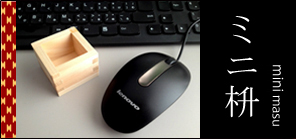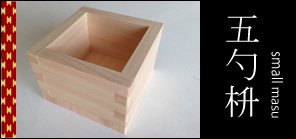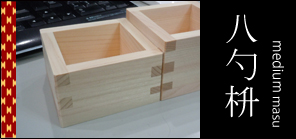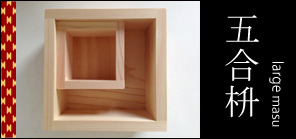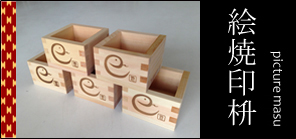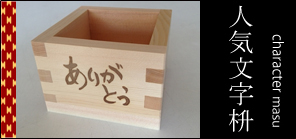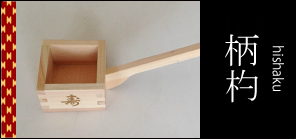


- Origins
Izakaya originates from sake shops(sakaya) that have allowed customers to stay(i or iru) and drink in or outside the shops. The term izakaya come from merging the expression "itsudukete nomu" (staying in one place and drinking) and "sakaya" (sake shop). Since Japanese people love to eat various small snack like dishes, appetizers while drinking sake, after a while these Japanese drinking establishments started to serve simple dishes as well in order to satisfy customers needs. Other than sake shops some shops selling boiled dishes(niuriya) and outdoor food stands have also developed into izakayas just to mention a few different examples. One of the reasons why izayaka became so popular in Japan could be found in Edo(Tokyo). The ratio between men and women was so extremely inclined to men most of whom where single, that those establishments got most popular that served the needs of these men. The requirements were simple, men wanted to drink some good sake and by the way fill their stomachs with some simple dishes that go well with sake while drinking. It wasn't until the 1970s that izakaya started to slowly change from being a "men's sake drinking place" to more open establishments that welcome basically anyone, even a group of women or a whole family.
- Description
In informal conversations izakaya is often called akachouchin(red lantern) thanks to the red colored paper lanterns hanged traditionally near the entrance of the establishment. Compared to western bars or pubs, the number and quantity of dishes available at a Japanese izakaya are much larger and they are focused on drinks that are popular in Japan like: sake, beer, chuuhai and whiskey. In traditional izakayas people are sitting on tatami mats and are eating from low tables whereas in modern ones guests sit on chairs and drink/eat from normal tables and there are restaurants offering both.
Upon visiting an izakaya, you'll first be given an either cold or hot (depending on season) wet towel called "oshibori" for cleaning your hands, then you'll be immediately served an appetizer called otoushi(Kantou) or tsukidashi(Kansai) for which you'll be charged on the bill. Next you'll need to order what you would like to drink and you could also order the first dishes. In a Japanese izakaya food is usually served in smaller portions which are shared between all the people sitting around a table, so you'll need to be fast, but polite if you'd like to fill your stomach. Since drinking alcohol is the main purpose of going to an izakaya, dishes are ordered slowly and unlike in western countries, they are served hot when ready. The dinner is usually finished with either a rice or a noodle dish to fill up your belly.- Most common types
-
Izakaya chain restaurants: are usually the cheapest forms of izakaya, offering a wide range of dishes and beverages.
Ichigensan okotowari izakaya: are the complete opposites of the above mentioned type. These type of izakayas are high class, available only to the elite. Its Japanese name literally means "By chance customers refused" which refers to the fact that you can only enter these places if you are introduced by someone, who in case of any trouble bears all responsibility over your actions. It's not unusual that these places serve many special, high class regional sakes that are produced only in a very small quantity. If you would like to explore some rare brews, then this type of izakaya may be what you are looking for!
Yakitori ya: is an izakaya where you are served delicately grilled, sauced, skewered chicken meat and offal in parallel with the drinks that you order usually from a counter.
Yakiniku ya: grilled meat izakaya, where usually the guests grill the raw meat and offal for themselves. This restaurant is not limited to chicken any type of vegetable, meat or seafood is OK.
Kushi katsu ya: also specializes skewed meat and offal just like the above two, but with the difference that here your get it as deep fried cutlets. In many cases you'll need to fry the cutlets for yourself which adds to the dining experience.
Oden ya: stewed fisk cakes, eggs, vegetables, konnyaku, tofu served from a large sized pot as a kind of hot soup often consumed with karashi(Japanese mustard) or miso(in which case it is called dengaku). Oden is a typical winter food, often sold outdoors from stands or food carts where people can sit around the oden pot and order an atsukan(hot sake) or a shouchuu(Japanese distilled beverage) to warm themselves up on the cold street. Normally you will need to order by piece, since each delicacy have a fixed price and you pay exactly for what you have eaten.
Robata yaki: This type of izakaya originates form the way of cooking used by Hokkaido fishermen in northern Japan. These fishermen had to find a way for cooking on their boats without burning up their vessel, so they have created a kind of stone brazier to protect all the surrounding wood from the heat, similar to an irori(traditional Japanese fireplace) that they have used for grilling their food. In a robata style izakaya, there's a fireplace in the middle which are encircled by fresh raw food and the customers sit the farthest from the irori. If you want to order, all you need to do is to point at a raw food held usually in woven buckets and then the master will grill them for you slowly over charcoal and serve them on a paddle, that's used to move all the raw and grilled foodstuffs.



In all these different types of izakaya, masu cups are frequently used for drinking sake. They usually bear the branded logo of the izakaya and customers can take their masu cups home when leaving as a stylish memento for the wonderful time that they have spent drinking and eating the best culinary specialities of the Japanese kitchen.


All the above prices are unit prices available above a given order quantity (1,30,50,100pcs)


The Masu selling company is shipping masu cups to customers both in Japan and worldwide. Recently we are getting more and more orders from not just individuals, but organizations, Japanese restaurants, international companies making a business opening celebrations Japanese style by opening a barrel of sake and drinking its contents from masu cups. An excellent way of drinking Japanese sake is to do it from a freshly made masu cup. That may be the reason why Japanese people cherish a rather intimate connection with these small wooden cups from the old times. We would like to share the best parts of traditional Japanese culture with as much people around the globe as possible.

